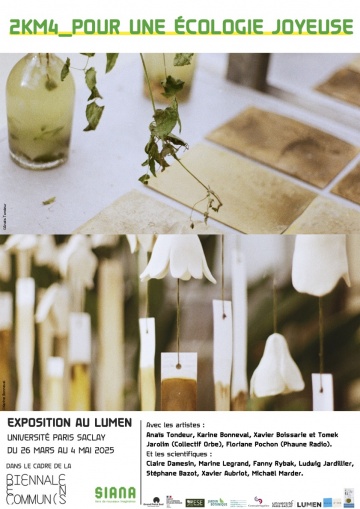Saccharumania
From April 1st to December 31th 2017 Chaumont sur Loire Domain, France9th art season, Chaumont sur Loire domain
Saccharumania, which is displayed in the boardroom and library of the castle, is a series of sculptures made of sugar installed in transparent globes on turned wooden legs.
The name and shape of these objects made for Chaumont refer directly to an English fashion, pteridomania. At a time when the Countess of Broglie bought the castle of Chaumont, the fashion for terrariums to grow delicate plants from distant lands exploded in the Victorian bourgeoisie.
Inspired by the Wardian cases - these portable greenhouses that have made it possible to transport and keep alive new plant specimens from across the Atlantic - furniture designers then compete in extravagance to compose furniture to be vegetated for Victorian interiors. In these complicated settings, mainly ferns (the pteridophytes of the name) settle, but also rare or strange plants, such as carnivorous plants.
The latter interest me particularly by the myths they have been able to convey in the European imagination (man-eating plants) and the baroque of their sophisticated forms. We can talk about a plant of character, which hides under its clothes a deadly trap for insects and sometimes even small mammals: a strong plant in a way, which responds to the flower power which is this year's theme in Chaumont sur Loire.
The Council Chamber was also the place for extravagant balls that perfectly corresponded to the forms and times of saccharumania inspiration. One can imagine that the Countess of Broglie, a great collector of exotic plants, could also have collected these victorian wardian cases.
This idea of the "natural" microcosm that we can have in our living room shows our unconditional need to possess and use living things, but it is also a sign of our fascination for this world of plants that still remains to be explored today.
The sugar material illustrates our complex relationship, as Westerners, with plants.
Sugar is, in terms of tonnage, the world's largest agricultural production, and the original plant, saccharum officinalis, originally harvested from the wild to be grown, has now completely disappeared in the wild.
In Europe, the cultivation of sugar cane has been at the origin of a double deportation, that of the vegetable of course, imported to grow it on the island of Reunion for example, but also and especially that of thousands of slaves in charge of cultivating it and transforming it into sugar.
Indeed, historically, this product, which today is part of the very cheap basic products, was called "white gold" under Napoleon, and was the subject of wars between nations.
My molded sugar sculptures retain this ambiguous preciousness, inscribed in the glittery and delicate side of refined sugar.
website



